Art Deco houses
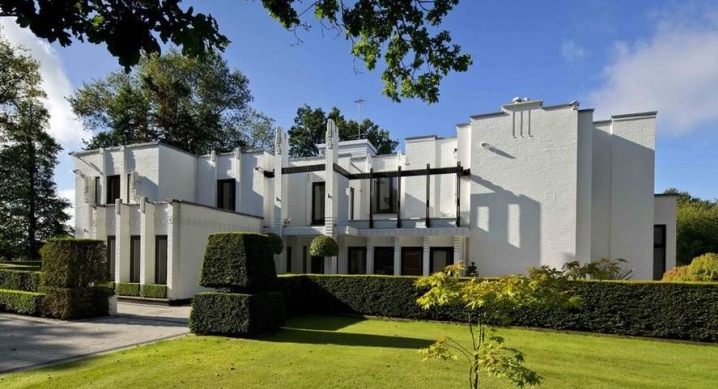
The art deco design direction originated in France in the 1920s. last century and quickly became popular far beyond the borders of the country. Typical of this style is the richness of colors and textures, unexpected geometric shapes and rich ornamentation. Art Deco presents glamor combined with technical progress, all design solutions are distinguished by a high degree of receptivity to all kinds of interior innovations.
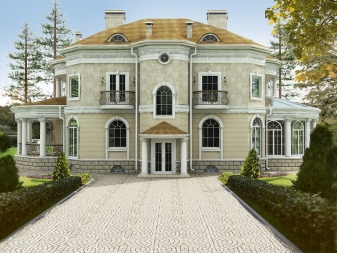
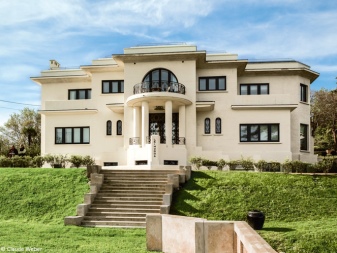
Design features
For the first time they started talking about the fashionable direction of Art Deco at the beginning of the last century in France, and already by the 20s and 30s. it quickly won an army of fans. Its name is translated from French as "decorative art". This is a very expressive and graceful style, thanks to which the living interior looks luxurious, sophisticated and rich. It was this atmosphere that was so necessary for people in the late 1930s, when the people were tired of poverty and other consequences of the Great Depression.
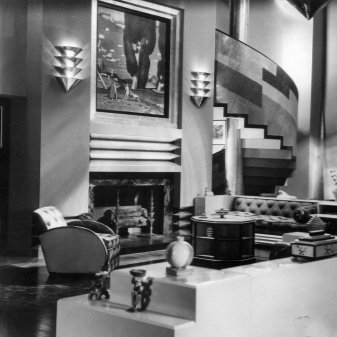

This stylistic direction harmoniously combines laconic primitivism and pretentious luxury, chrome-plated metal and wood, functionalism and frivolous jazz motives. The standard example of this style was the interior design of 5-star hotels, respectable restaurants and some other fashionable places of that period. However, this style was far from affordable for everyone, only wealthy people could implement it in practice; for ordinary Americans with their small apartments, this design was not available. Art Deco is recognizable for the following characteristics:
- laconic geometry;
- asymmetry, broken and zigzag lines;
- the use of expensive facing materials;
- ostentatious pomp of decorative elements;
- an abundance of metal and mirrors;
- the use of ivory, glass mosaic, multi-colored stained-glass windows, expensive crystal, precious woods and luxurious tableware;
- the presence in the interior of the skins of wild animals: antelope, tiger or bear;
- exotic masks, drums and figurines;
- an abundance of gloss on surfaces.
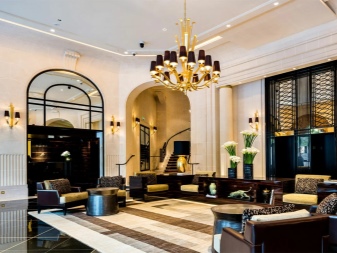
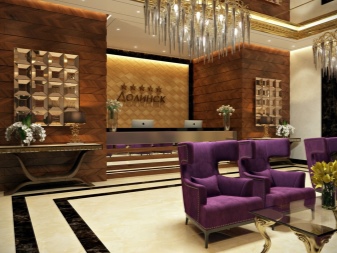
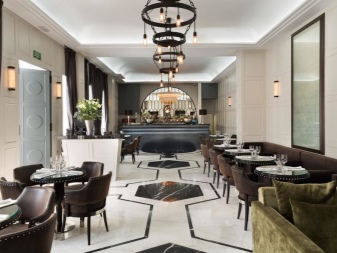
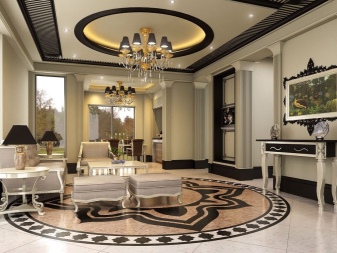
Finishing materials and colors
Such chic interiors require appropriate surface decoration in the house. For floor coverings, parquet made from precious woods is usually used. Finishing with black and white tiles or natural stone has become widespread. In modern interiors, it is allowed to use budget imitations of parquet boards from linoleum or laminate.
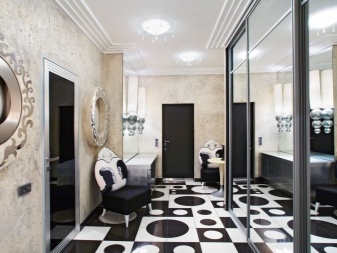
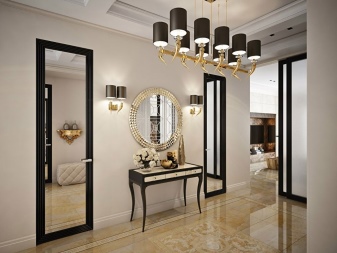
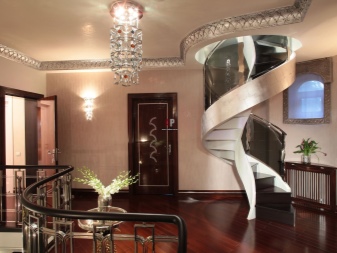
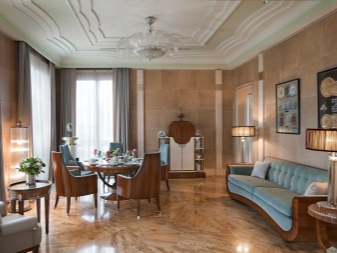
A hundred years ago, the ceiling was plastered in white and decorated with plaster moldings. Nowadays, Art Deco prefers multi-level structures made of PVC or drywall, and stucco molding is formed from expanded polystyrene or polyurethane materials. Installation of stretch ceilings is allowed - in this case, they must be painted with photo printing.
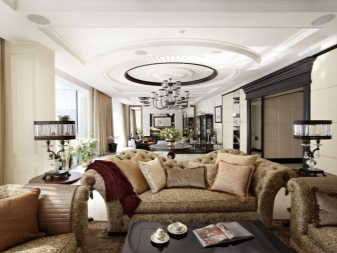
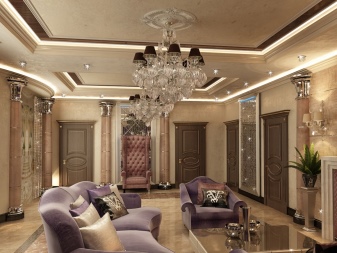

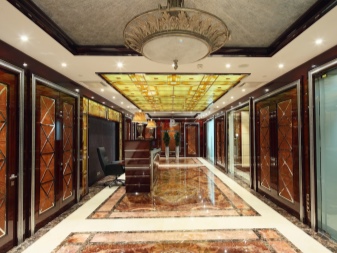
There are many interesting options for decorating walls, most often it is decorative plaster or drapery with silk wallpaper. In the latter case, material with prints on the theme of Asian hieroglyphs, African ornaments is used, a geometric print has become widespread. In some interiors, surfaces are decorated with decorative wood panels. They should be monochromatic, painted in discreet shades.
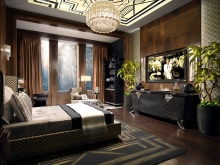
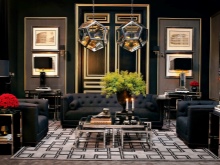
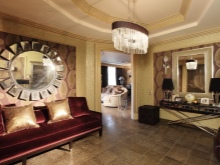
The windows in Art Deco interiors are large and give a lot of light, ideally in wooden frames. Window openings are decorated with an almost weightless transparent tulle, and at night they are closed with dense heavy draperies.
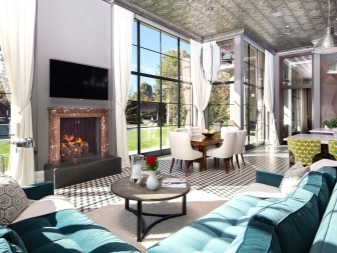
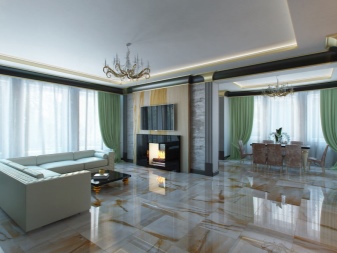
Furniture and decor
As for furniture, the main principle of Art Deco is maximum rigor in everything. Instead of smooth lines - sharp, and instead of common in the old days, floral ornaments - geometric and abstract patterns. No interior design is complete without the use of shapes such as square, cube, circle and ball. It is no coincidence that pieces of furniture often repeat the outlines of these forms. Furniture facades are finished with black lacquer with mother-of-pearl; it is allowed to use gilded or chrome-plated metal, ivory and genuine leather.



Ethnic motives are certainly present in the decor. Carved caskets, Chinese partitions, oriental handmade carpets, African figurines, drums, masks, as well as skins of wild animals became widespread. The archaeological discoveries of the beginning of the last century were reflected in the formation of the style. This is how elements of the art of Ancient Egypt, Rome, Babylon and Assyria appeared in the design of interiors, and Aztec and Inca ornaments are far from uncommon.
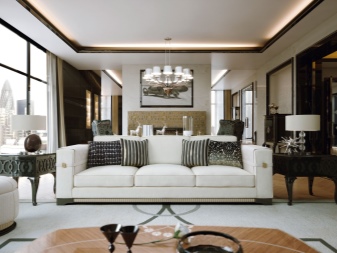
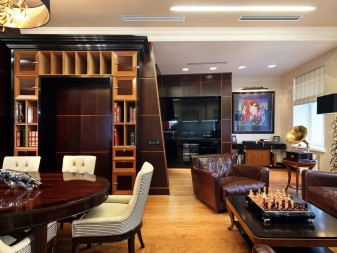
Examples of projects
In fact, the interior of a residential building in the art deco style combines external pomp, the traditions of ancient civilizations with the achievements of technological progress. Luxury lies not only in the use of various finishing materials, but also in the visual confirmation of richness, which manifests itself in rich and vibrant decorative elements.
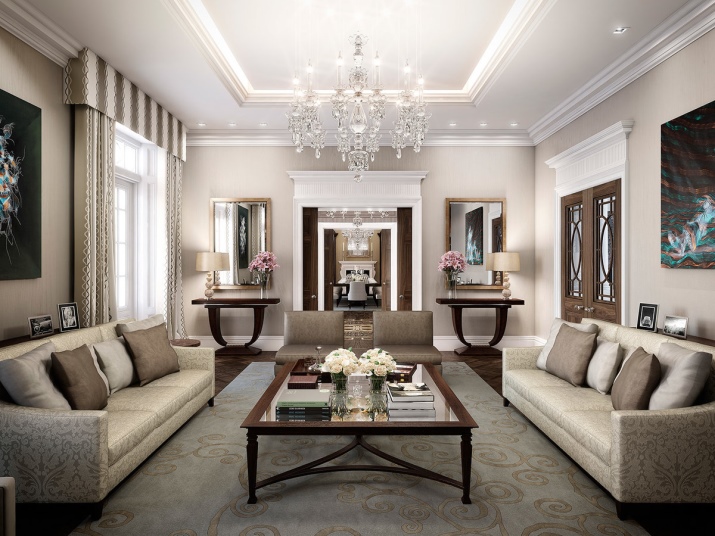
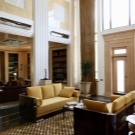

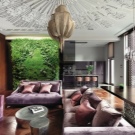
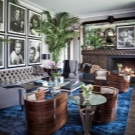
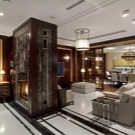













The comment was sent successfully.